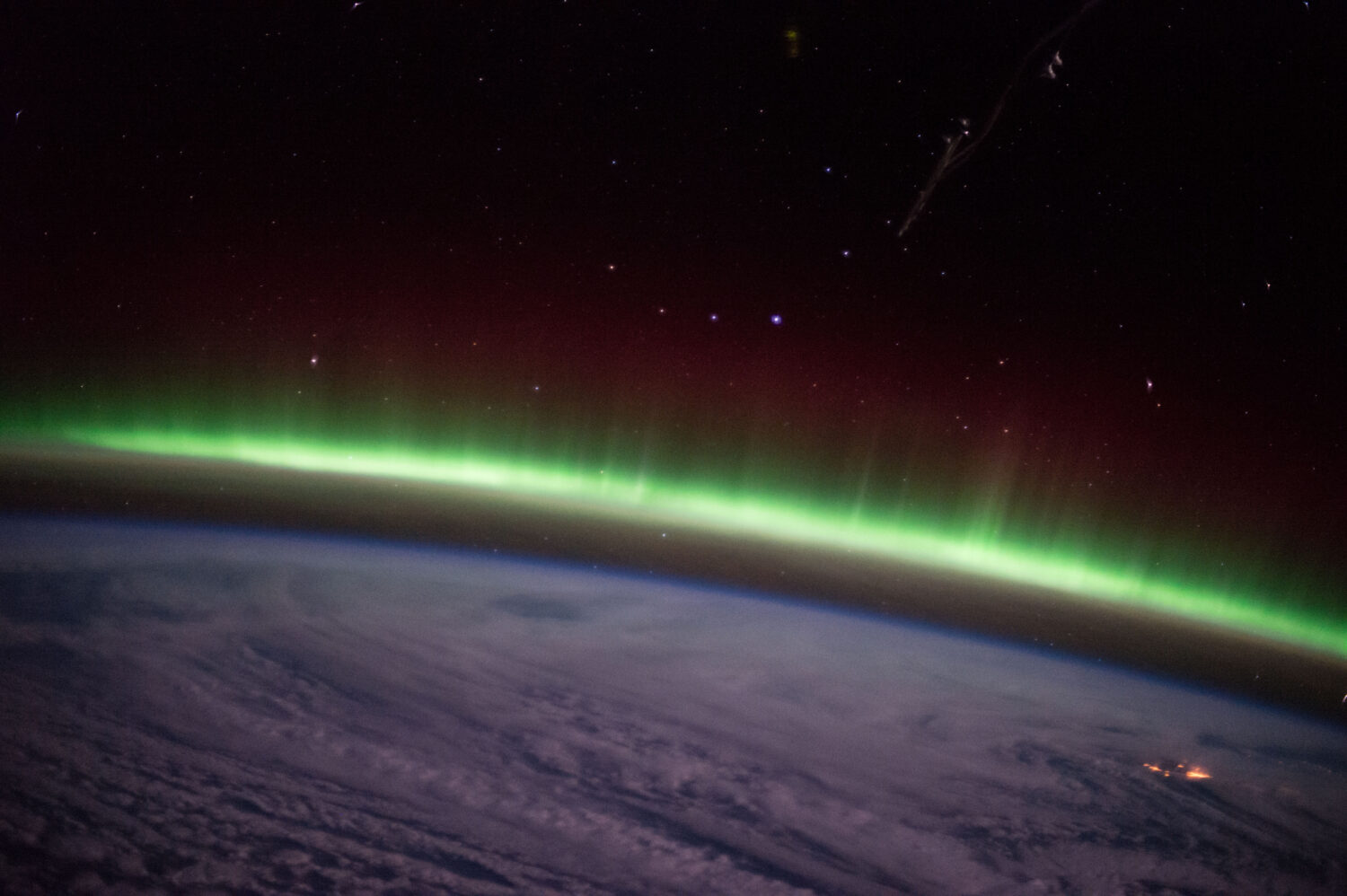
Amid unrest in the universe of UAPs, experts discuss NASA’s future role
Despite seeming otherworldly, the aurora borealis, pictured here from the International Space Station, is a known phenomenon. Unidentified anomalous phenomena, or UAPs, have the attention of government agencies and a devoted fanbase. (NASA photograph)
Identifying unidentified objects in our skies is a difficult task. Talking about research on them amid a lack of data, differing perspectives, and social media backlash exponentially increases the challenge.
“I think what’s so interesting about this topic is how the science plays into the public perception of what this topic really is all about,” said Iain Boyd, director of the Center for National Security Initiatives at the University of Colorado Boulder. Boyd was a panelist in an Oct. 7 session on unidentified anomalous phenomena, or UAPs, presented at the Council for the Advancement of Science Writing’s New Horizons in Science briefing at the ScienceWriters2023 conference in Boulder, Colo. (An audio recording of the session is available.)
The discussion surrounding UAPs—the updated term for unidentified flying objects, or UFOs—has surged in recent years. A recent catalyst was NASA’s 2022 announcement charging an independent study team with evaluating the agency’s role in UAP research. The eagerly awaited report, published Sept. 14, recommended that NASA play a “prominent role” in the research and future identification of UAPs, as well as promote public engagement in UAP reporting. When the report was released, NASA made another pivotal announcement—the appointment of a director of UAP research.
The renewed interest in UAPs, coupled with NASA’s increasingly visible involvement, formed the crux of the panel’s deliberations at the ScienceWriters conference. Panel members delved into the intricacies of NASA’s participation in UAP research and dissected the report’s final conclusions.
Panelist Nadia Drake, interim physics editor at Quanta Magazine and a member of the NASA independent study team, emphasized the current lack of information crucial for understanding UAPs. “When it comes to understanding UAPs, the science that we need is just not there,” she said.
Boyd disagreed. “We do have the science; we don’t have the data,” he countered. “How are we going to get enough data to be able to exercise the science?” Data for UAP identification could include images and videos, as well as radar, microwave, infrared and atmospheric data.

One contributing factor to the lack of data is data secrecy from the U.S. government. Mick West, writer, UFO investigator, and creator of Metabunk.org, raised a critical point about classified data and its implications on UAP identification. “You’d hope the military has done some good scientific analysis with their classified data, but we have little indication of that,” he said. “They took two years to figure out these green pyramids”—referring to a video released two years ago of blurry UAPs in the sky—“but internet investigators figured it out in just two days.”
The overclassification of data may worsen the problem of lack of data, noted Dan Vergano, senior opinion editor at Scientific American and the moderator of the panel. “You don’t know what you don’t know because of the classification system in this country … it’s run amok.”
West and Vergano’s comments illuminate another point of contention in the realm of UAPs: whether UAPs are a national security issue or a science issue. Should UAPs be researched in the first place? Panelist Thomas Zurbuchen, director of ETH Zurich Space and former head of NASA’s science program, agreed with the overall recommendation from the independent study report that NASA can assist in understanding and identifying UAPs.
In an interview after the session, Drake said that she doesn’t think there is enough of a science case to be made for NASA to be involved in the study of UAPs. “I think it’s much more of an intelligence community problem,” she said.
Discussion of UAPs is already fraught with dissenting opinions on data scarcity, data sharing, and whose responsibility it actually is to monitor UAPs. Alongside those issues are the relentless scrutiny of the public and backlash on social media.
“There’s just an incredible social media backlash and discussion that goes around when you write about this stuff,” said Vergano.
“I don’t know how to handle it,” Zurbuchen said about social media outrage. However, he noted that the current state of public opinion on UAPs should not mean that scientists and science communicators shy away from discussing the controversial topic. “Looking away deliberately because of embarrassment or other reasons is actually a bad thing, in my opinion.”